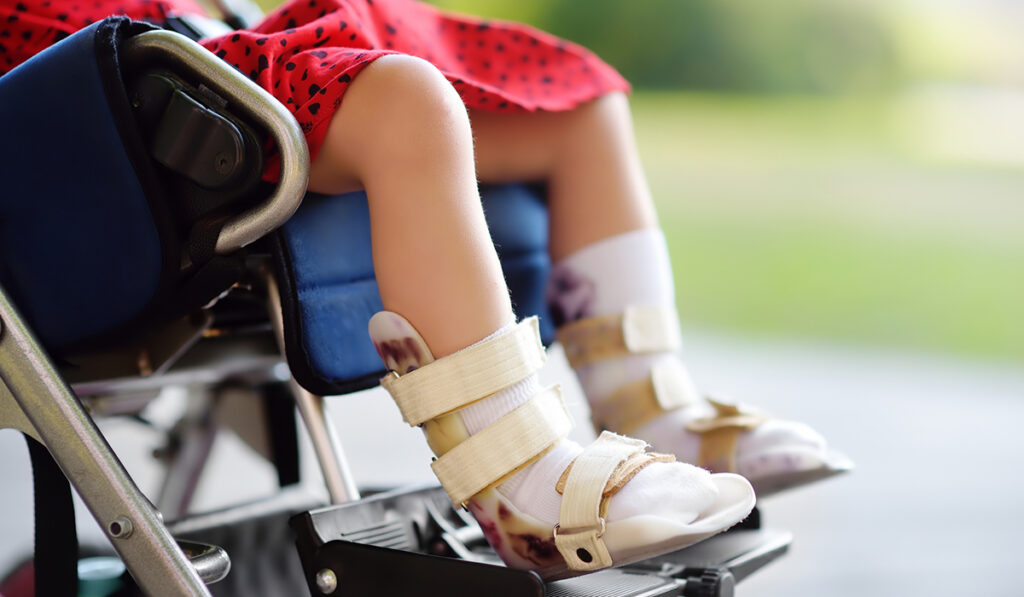Neurogenic bladder in children typically stems from central nervous system conditions that impact the ability to empty the bladder completely, such as spina bifida, cerebral palsy or spinal cord injury.
Suppressed distal motor and sensory nerves interfere with the bladder’s function. Left untreated, the condition can lead to kidney damage.
Self-management of neurogenic bladder is complicated by the various physical and cognitive comorbidities a child may have. These, plus social factors, influence how the family and child ultimately decide to handle urethral catheterization, an option that needs to be well-considered early in life.
Occupational therapist Morgan Kane has taken the lead in identifying gaps in the literature that have delayed standardization of self-catheterization procedures and guidance to families, with encouragement of John Thomas, M.D., chief of staff in the Division of Pediatric Urology at Monroe Carell Jr. Children’s Hospital at Vanderbilt, and Douglass Clayton, M.D., director of Vanderbilt’s Spina Bifida Clinic. In 2022, she published a report detailing her findings.
“More and more, children with these conditions are growing into adulthood,” Kane said. “At Monroe Carell, I partner with urologists to do readiness assessments and provide treatment to try to teach these children how to self-catheterize. Unfortunately, there’s just not a lot in the literature that talks about systematic ways to teach self-care.”
With support from the Spinal Bifida Association, Kane is collaborating with occupational therapists across the country to improve outcomes and parental buy-in for early self-catheterization. A future multi-site study is in the planning stages.
“From there, we’re hoping we can disseminate guidelines for customizable occupational therapy treatment plans. These recommendations can help many children become continent and/or independently manage their catheterization schedule, avoiding surgery in many cases,” Kane said.
Treatment Choices
Children with neurogenic bladder can experience vesicoureteral reflux, which can increase urinary tract infections, risking renal failure if uncontrolled. Kane says the primary goal is to protect the kidneys. After that is assured, then continence and independent catheterization can come to the forefront.
Non-surgical or post-surgical treatment alternatives range from monitoring with imaging and urodynamic studies, anti-cholinergic medications, or clean intermittent catheterization. Surgical options include sacral neuromodulation, bladder augmentation, bladder neck reconstruction, ileovesicostomy or creation of continent catheterizable stomas (i.e Mitranfanoff), to name some of the most common.
Emotional Boost from Self-Care
There are also important psychological reasons for suggesting that families consider self-catheterization earlier. Aside from the ability to participate independently in school and other activities, Kane says it is a confidence-builder. Children who have difficulty learning self-catheterization through traditional teaching can experience low self-esteem, frustration, and caregiver-dependence into adolescence.
“Unfortunately, there are not many OTs involved in spina bifida clinics nationally, and physicians and OTs struggle over what to recommend to families, and when.”
“In practice, we are recognizing the benefits of starting self-catheterization training early,” Kane said. “Unfortunately, there are not many OTs involved in spina bifida clinics nationally, and physicians and OTs struggle over what to recommend to families, and when.”
The OT Role
Nurses play an important role in educating patients and families on bladder management. At the same time, Kane’s report describes mounting evidence that this can be augmented by occupational therapists trained to evaluate each patient’s deficits and strengths and by doing task-analyses to develop customized routines.
Self-catheterization is a complex task, requiring the integration of cognitive, visual, motor, sensory, and motor planning skills. Patients with myelomingocele, for example, experience cognitive and motor skill delays and may also struggle to recall and adhere to a daily schedule.
To address needs holistically, occupational therapy interventions at Vanderbilt include pediatric-friendly anatomy education, lower body dressing techniques, transfer training, assistive device training, memory aids, such as vibration watches, gripping aids, visual aids such as flash cards and teaching dolls, lower extremity positioners, and more.
“There can be a lot of fear around inserting something into their bodies,” Kane said. “Plus, the child has to find the best position, and then go through sequential steps, using equipment like toilet seat inserts, an adaptive mirror and a labia spreader for girls. Once they are doing this, they need to strictly adhere to a schedule of catheterizing every four to six hours.”
Importantly, assessing readiness for self-catheterization impacts urologists’ determination on the timing and appropriateness of creating continent catheterization channels.
“No studies to date have explored occupational therapy evaluations as part of pre-operative assessment,” she said.
Offering Guidance
Occupational therapists can obtain special certifications to improve the efficiency and efficacy of self-catheterization interventions. Kane points to teachable cognitive approaches like the CO-OP Approach, which uses the GOAL-PLAN-DO-CHECK model and is intended to help children with motor coordination difficulties.
Kane and a colleague were just approved for a grant from the American Occupational Therapy Foundation for a pilot study on OTs teaching self-catheterization, using CO-OP and mobile health tracking systems (iMHere 2.0).
“I think we can draw more conclusions than we have from the knowledge base out there,” Kane said. “We need to compare methods, with the goal of formalizing the role of the pediatric occupational therapist in analyzing competency in bladder management, so we can help these kids avoid earned helplessness’ and work toward independence.”





